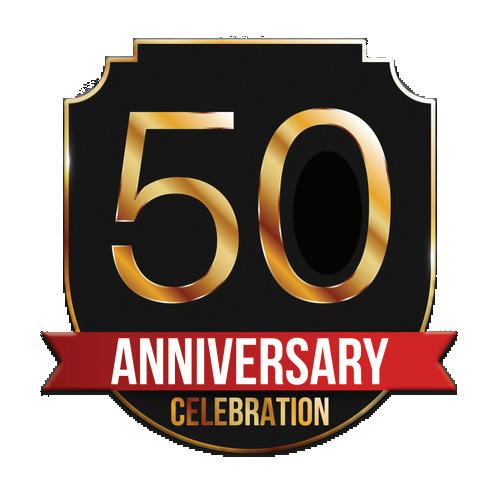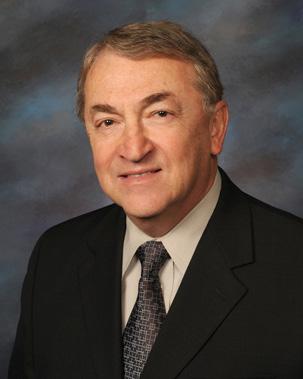
13 minute read
50YEAR HONOREES
Your 2020 Class of DBA Fifty-Year Honorees Year
Neil F. Freun d Freund, Freeze & Arnold A Legal Professional Association
Advertisement
Lawren ce W. Hen ke III.
Judg e Mich ael R. Merz US District Court
Jon as J. Gruen berg Coolidge Wall Co., LPA
John H. Rion Rion Rion & Rion, LPA, Inc.
A. M. Seg reti Jr. Montgomery County Common Pleas Court
David A. Saph ire
By David C. Greer Esq. DBA Editorial Board Bieser Greer & Landis LLP dcg@biesergreer.com 937.250.7773
It has been a tradition for many years to hold an annual luncheon at which we honor those members who have practiced for half a century in their profession. In this Covid-19 year of 2020 that tradition has by virtual necessity been modified to a collection of written reflections.
It may take several issues of Bar Briefs to present our honorees in this new format, but we hope the change will provide a positive way of presenting and preserving our annual honorees. If you are reading this article as a first-year member of the Dayton Bar Association, take a moment to reflect on what you are encountering. Here are distinguished lawyers who began their practice in 1970. In that year they were part of a group who heard lawyers who had started their practices in 1920. Those 1920 lawyers had an opportunity to meet and hear from lawyers who had started their practice in 1870. Those 1870 lawyers had the opportunity to meet and hear from lawyers who had begun their practices in 1820. In 1820 Joseph H. Crane, who became Dayton’s first lawyer in 1804, was still alive. By reading the comments of the Class of 2020 you are suddenly finding yourselves in contact with every lawyer who has practiced in this community during its 224-year history.
In 1970 what is now known as the Stratacache Tower (formerly the Winters Tower, then the Kettering Tower) was constructed. James McGee became Dayton’s first African-American mayor. Walter H. Rice became a judge on the Dayton Municipal Court. Arthur Beerman who in his career had provided a continuing feast of litigation for Dayton attorneys, died. Four people were killed at Kent State University while protesting against the Vietnam War. A dispute between Art Thomas and the Dayton School Board became the prelude to the Dayton desegregation litigation which would consume ten years and two trips to the United States Supreme Court. Francis Canny, who had been a Dayton lawyer since 1913 and the United States Attorney for the Southern District of Ohio from 1922 to 1940, died.
Here is the first installment of the recollections of Dayton attorneys who started their practice here in 1970.
continued on page 19

Year
Michael R. Merz, Magistrate Judge United States District Court in Dayton
I started my practice at Smith & Schnacke the Monday after getting my degree, at first doing securities regulation compliance, proofreading galley sheets of prospectuses at New York financial printers. I eventually gravitated to doing commercial litigation, mostly antitrust (back when the United States had a functioning antitrust law) with Jon Sebaly, who taught me to think strategically about everything I do and who is still a good friend and fellow “Dayton Book Guy.” Other important mentors from practice were Stan Freedman, who taught me how delightful word use precision can be, and Walter Porter, who taught me it is more fun to defend a legal malpractice case than to turn it over to the insurance carrier.
I was appointed to the Dayton Municipal Court in December, 1976, to fill the seat vacated by Bill Wolff. Al Sealy, my law partner and GOP County Chair, got me appointed to deny the seat to Steve Milby who had beaten Doug Ferguson in the 1976 primary and then lost the general election to Wolff. I took the bench in July 1977 and was not expected to be elected in November – S&S kept my office vacant. In the hallway of the Safety Building, Jim Gilvary heard a Dayton cop ask “What does a corporate lawyer know about criminal law?” Two years later when I taught antitrust as an adjunct, UDSL students were heard to ask “What does a municipal judge know about the Sherman Act?”
I’ve been at federal court since November 1984. A magistrate judge’s work is entirely controlled by referring District Judges and my predecessor Bob Steinberg’s work was largely limited to search warrants, initial appearances, and Social Security appeals. However, Walter Rice let me have a wide range of work from the very beginning. There have been many memorable cases, but two stand out. (I hired on as a “magistrate.” Getting “judge” added to the title in the early 90’s cost our professional association a mountain of lobbying fees.)
Hubert, Graf Deym, bought a Daimler Benz for his honeymoon in Silesia in 1937. On VE Day (May 7, 1945) the car was seized from his estate in Munich. Somehow the car got “across the pond” and into the possession of a doctor in Connecticut. In the 1990’s that doctor was getting ready to sell off his collection of pre-War German automobiles and put the car into the hands of a Dayton car restorer, Herbert von Fragstein. Von Fragstein and a potential buyer flew to Europe to persuade the Count to sell them the title for several thousand dollars. Graf Deym, who hadn’t seen the car for fifty years, is reported to have said “Hell, no, I want my car back” and started a replevin action in the Dayton Municipal Court. Thanks to diversity of citizenship, the case was removed to federal court. Because I always got any replevin cases, it was referred, the parties consented, and the case was mine. The outcome turned on two questions: (1) Were the persons who seized the car in 1945 real French soldiers or bandits in French army uniforms? (2) Was Graf Deym a citizen of West Germany on October 1, 1954? These are questions which don’t often arise in litigation, at least in our Court. To resolve them we considered all sorts of evidence, including an affidavit from the Communist mayor of Florence during WWII and transcripts of Czech denazification trials. In the end, judgment for the Count and the car went back to Europe. Having a chance to decide that case was well worth the fifty thousand plus recitations of the Miranda warnings which are also part of the job.
My quite memorable but perhaps least rewarding day on the bench was June 1, 2009. I was at the Vatican for a conference on child sexual abuse by Catholic clerics. My wife, Margot, and I were staying in Santa Marta which is the building where Pope Francis has chosen to live. As I arose, I was greeted with a New York Times story that said I had been reversed 9-0 by the Supreme Court. Adam Liptak’s lead for the story was “As a death row inmate, you know you’re in trouble when all the hostile questions come from Ginsburg (that’s Ruth Bader Ginsburg before she shortened her name to ‘RBG’) and Souter.” I had convinced the District Judge and all but one judge of the Sixth Circuit that when the State admits a defendant is intellectually disabled, that admission of fact is binding as a matter of res judicata. (At the time, of course, we said “mentally retarded.”) Not so said Her Honor. See Bies v. Bagley, 519 F.3d 324 (6 th Cir. 2008); reversed, Bies v. Bobby, 556 US. 825 (2009). It’s the only case I’ve had that reached the Court.
As for general reflections on the course of the law in the last fifty years, I wish we had not become so enamored of advertising, I wish that the Sherman Act had survived, but I have great faith in John Roberts who goes to the same church where Margot and I were married. (Roberts joined the parish after we were married. In other words, he followed us, not the other way around.) All in all, to paraphrase what Walter Rice has said so often to the Bar “I’m [still] proud to be a lawyer and you should be too.” continued on page 20
DAILY COURT REPORTER www.DailyCourt.com Miami Valley's Choice For Effective, Afforable, Legal Publishing!

See for yourself in your complimentary DBA edition of the Daily Court Reporter

Year
50 years, really?
Happiness
Dennis Prager presents a program called “Happiness is a Serious Problem.” When addressing how a person’s vocation can contribute to happiness, he tells us that there are only two factors in your vocation that contribute to your happiness: (1) Do you enjoy what you do? (2) Do you find it meaningful? I’m fortunate that I can say yes to both. (1) What we do is intellectually challenging, the learning never stops; and, the socialization, internal and external, is stimulating. (2) There is tremendous satisfaction when I and the team at Coolidge Wall help individuals and community organizations achieve their worthwhile goals, which to me is very meaningful.
Mentors
I tell the young lawyers in the office to work with as many lawyers as you can. You will learn from everyone. You will learn the good, the bad and the ugly. You will collect the experiences and translate them into a style, methodology and philosophy that works for you. I had the good fortune to work with many excellent lawyers. Every lawyer I have worked with and against has been a mentor. I have great respect and appreciation for all of the partners and associates at Coolidge Wall, present and past, for their support, friendship and mentorship. While all have helped me, the two that influenced me the most in my early years were Pete Wood and Bob Womsley (current lawyers may not know either of them). Two men with very different personalities who did very different kinds of work.
Pete Wood worked primarily in dispute resolution (and sometimes dispute creation). Pete taught me creativity (which is sometimes lacking in our profession) and precision. Pete loved complex situations that would allow him to create innovative approaches to the resolution process; and he was meticulous in his preparation. Pete and I worked together on several zoning cases (among other things). In one case, which to me was a repeat of something that we had handled six months before, Pete went to the library to review the statutory context. I said to him, “Pete, we just did this six months ago and looked at these exact issues, why go back to the library?” His answer was, “How do I know that something hasn’t changed in the last six months,” a lesson in precision. That lesson is amplified today because after practicing for 50 years so much has changed, it’s often hard to remember what we should have forgotten so that we don’t apply old rules and knowledge that are no longer correct in current circumstances. A second memorable experience with Pete was also a zoning case. He meticulously prepared his questioning of witnesses. Toward the end of the trial he was cross-examining the city manager for the city involved in the zoning dispute. After asking a series of well-crafted questions he came to the finale. After asking his question, the city manager, who was very astute, hesitated and said, “Mr. Wood, based on what I’ve previously answered there can only be one answer to that question.” Pete looked at the judge, looked back at the witness and said, “that sir is the art of cross examination.”
Bob Womsley’s practice was business and financially based with a lot of real estate, much like the practice that I’ve enjoyed. Working with him I learned how important it is to understand the individual you are representing, to understand their motivation and objectives, and to understand the context that presents the issue. Many, if not most, are fairly straight forward, but different individuals in the same context may have different values and objectives so it is essential to understand both the person and the context. Working with Bob was always enjoyable, and there were many satisfying achievements for us and for our clients. Change
What has changed in 50 years? The short answer is everything and nothing. When you consider the evolution and influence of all the technologies that are now applied in what we do and how we do it, nothing is the same. 50 years ago more original thought was brought to the legal process because we didn’t have all the services and forms to tell us how we should do everything. Lawyers today often start by relying on the forms and then considering what tweaks should be made. The speed at which we work and communicate, and the client’s sense of urgency which confronts us, give us little time to think. We get an email and if we haven’t responded in an hour we get a call asking if we got the email. The only thinking time we have is when we can’t sleep at night. Keeping in mind that my practice has been an office practice (I have avoided the court room for the most part), except for the pace and the tools, the process hasn’t changed very much. We still start by understanding the client, understanding the circumstances and working with the client to determine the optimal outcome. Then begins the legal steps necessary to ensure that outcome.
Community
Another highlight of my 50 years is the non-legal side of life. I was a new kid in town when I came to Dayton and had no contacts in the community. Coolidge Wall and its clients introduced me to the opportunity to become very engaged in the community. Community engagement is important to me; and, I have had the honor and privilege to serve the community in a variety of leadership positions in the arts community, the social service community, the banking community, the hospital community, the education community, the economic development community, and the Jewish community. I have no doubt that my career and the contacts it provided facilitated these experiences and these experiences are and continue to be an important part of my
continued on page 21
life. I will always want to help make Dayton be a wonderful place to live. I thank Dayton and all its organizations, for the work they do and for being receptive to the participation of a new kid.
Family
Being a lawyer challenges family. Without their understanding and support everything comes apart. I am blessed with an accepting, supportive and accomplished wife who has received many awards and accolades for her community contributions. We have been married longer than I have practiced law. We have two terrific children, and seven even more terrific grandchildren. The stress of our• profession takes a toll on us and our families. My family has been wonderful to let me do what I do, and I appreciate their support and understanding. I hope they all know how much I love them. The Journey This is adapted from a prayer by Rabbi Alan Fine.
Life as a Lawyer is a Journey
Passing the Bar Exam is a beginning Retirement is a destination Life as a lawyer is a journey From novice to maturity From innocence to awareness From ignorance to knowing From foolishness to discretion And then perhaps to wisdom.
From success to success And a few failures Until, looking backwards or ahead, We see that victory lies not At some high point along the way But in having made the journey Step by step, A sacred pilgrimage.
To be continued . . .











